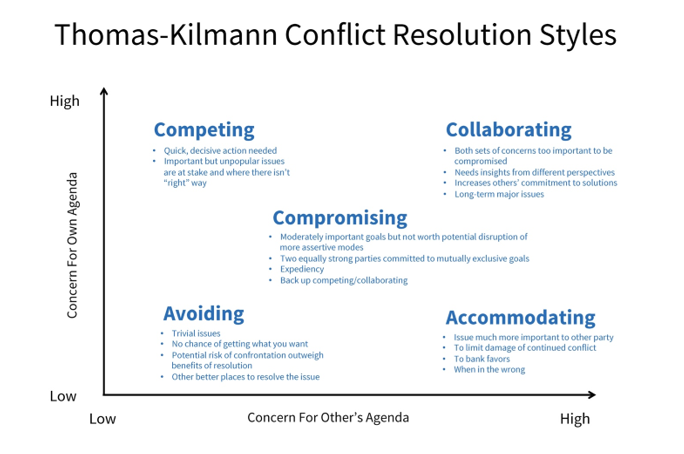Every parent who starts a business dreams of one day passing it to their children. But these dreams can often turn into nightmares. The best laid plans of family business leaders can quickly fall apart when rival personalities are at play. That’s why most family businesses don’t make it to the third generation. Research shows that it often comes down to sibling rivalry among family members and poor formal business structure. Identifying personality traits that lead to unhealthy behavior and creating a set of governance rules that place the longevity of the business first is key to long term success.
When passing a business on to multiple children, parents can often unwittingly create an environment that creates strain, strife and eventually, disaster. This is mostly due to personality differences. As anyone who has multiple children can attest, each child is unique and often will have a wildly different personality than their brothers or sisters. It’s nature—but in the office, it can create conflict.
Over the years, I have worked with numerous family businesses where siblings work together—and where there’s a high level of tension and head-butting. Often, it’s a case of one of the siblings having a more dominating style. They may or may not have actual “power” over the other sibling, but it can sure feel like it. In these situations, one sibling is often more intense in their work habits and resentful of the more relaxed (and sometimes less knowledgeable) approach of the other sibling. Conversely, the more relaxed sibling feels resentment as well and may develop a passive-aggressive approach to their brother or sister. Like a pressure cooker, these resentments build on both sides until the situation eventually explodes—and the other employees and the business are the ones catching the shrapnel.
The conflicts and differences in style and approach between siblings are usually based in a long and difficult family history that’s spilled over into the business. The best way to avoid this type of scenario is to create governance rules before passing the business on to the next generation. In many cases, that hasn’t happened, so making changes in the dynamics necessary to break the gridlock and create harmony among the rest of the staff becomes imperative.
Identifying Conflict Resolution Styles
When siblings are at odds, mending the relationship isn’t as simple as having a quick sit-down. The clash of personalities that created the chasm in the first place is also the reason resolution is difficult to achieve. The key is making adjustments to how a conflict is resolved, and it starts with identifying how each sibling prefers to express themselves. According to the Thomas-Kilmann Conflict Paradigm, there are five different conflict revolution styles: Competing, Collaborating, Compromising, Avoiding and Accommodating.

Knowing when to use which style is the key to mitigating the conflict, coming to an agreement that suits both parties and, most importantly, helping the company. As a family business consultant, I spend time with each sibling to get a sense of not only their issues with their brother or sister, but how they prefer to address conflict. I then use this information to bring both parties to a neutral state, where they become more aware of how their actions are affecting their sibling and their company. In most cases, once a sibling understands the consequences of their behavior, they’re ready to “buy-in” and begin to adjust their behavior.
Applying the Conflict Resolution Styles
The following example shows a recent situation between a sister and brother, who are both in their 40s and work for the family business. This example demonstrates how becoming aware of your conflict style and making adjustments can positively impact both the sibling relationship and business.
These siblings are second generation co-owners of a business founded by their parents. The sister is the CEO, has an MBA, experience working outside the business and has held several leadership roles. The brother is younger, holds a 2-year degree from a community college and has only worked in the family business. When I began consulting with them, the older sister was angry and frustrated with her perception of her brother’s limited management skills. She was usually aggressive and in a “Competing” conflict style when interacting with her brother. Her brother was more passive in nature and developed an “Avoiding” style when dealing with any conflict at work- especially with his sister. Neither was aware of the tension and discomfort their conflict resolution styles were creating among the employees. Additionally, important decisions that required both of their input were not be made in a timely manner.
After I pointed out how their styles of addressing conflict were negatively impacting the employees and company, they were both open to assessing their own style and making behavioral changes. They began to see that their inability to have a productive conflict resolution process was causing major problems in the company. We determined the type of decisions that would work best with the five different styles. Currently, they have reduced their negative interactions significantly, employee morale has improved and they’ve successfully reached their targeted Sales goals (in spite of COVID-19).
It doesn’t happen overnight—I use various behavioral strategies and suggestions to help them along the way. Eventually, the sibling working relationship becomes much healthier. It may take some time, but repairing the relationship is the only way to forge a new path forward and come to a resolution that both parties can agree too. Sometimes that means one sibling leaving the business, sometimes it means creating solid governance that removes the gray areas and guides all decision making going forward. The ultimate goal though, is to create a structure that helps the company and saves the family relationship.
Sibling rivalries are as old as time, but when it comes to a family business, eliminating conflict and creating governance rules between warring parties is essential survival.





